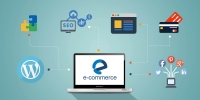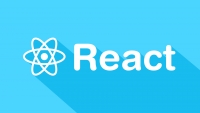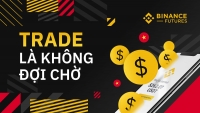So, we would like to take a step back and explain what NFTs are in a way that anyone can understand.
Hopefully after reading this, you’ll be just as excited about NFTs as we are!
Where it all started: cryptocurrencies, blockchains, and Ethereum#
One of the very first uses for blockchain technology that gained the attention of mainstream users was Bitcoin, a digital currency that removed any need for a middleman (i.e. banks).
Bitcoin was exciting because it proved that decentralized, digital currencies could actually work, and it solved a number of problems. Bitcoin allowed anyone to make secure, transparent, and verifiable transactions thanks to its public, distributed ledger (the blockchain).
Blockchains are essentially distributed databases, allowing us to store information in a way that is secure and publicly accessible. Because they are distributed, there is no need for a middleman, making cryptocurrencies like Bitcoin possible. Blockchains also provide economic incentives to avoid cheating, thus allowing real economic scarcity (we’ll return to this concept later).
Blockchains also provide some interesting solutions to the problem of digital identity: every transaction that you make on a blockchain is associated with a public address — an anonymous and secure identifier that you can use over and over again.
We can see that blockchains are very powerful, bringing about the first widely used cryptocurrency, but Bitcoin is only useful as a currency. It’s nothing more than a representation, record, or placeholder of value. While Bitcoin used a blockchain to store a record of transactions, there were some people who saw an even greater potential.
The result was Ethereum, created by Vitalik Buterin, which uses blockchains to decentralize much more complicated information — even scripting. People began using Ethereum to create new cryptocurrencies (often referred to as tokens) and decentralized applications (or dApps) like our LAND Marketplace.
This ability to encode more complex data structures led to a need for standards…
ERC: building a community and ecosystem#
You’ll often see the acronym ERC thrown around in crypto circles (usually followed by an identifying number like 20 or 721). ERC simply stands for “Ethereum Request for Comments” which results in a set of standards for building software using Ethereum. These standards are written and agreed upon by the Ethereum developer community.
Why do we need standards?
Standards allow developers to build software that’s compatible with other software. Without these standards, you wouldn’t be able to buy LAND with your MANA or MANA with ETH. By making sure different tokens and applications share similar components, developers can then interchange those components to build new experiences.
Think of these standards like Lego: since all of the different pieces fit together in the same ways, anyone can use them to build all sorts of cool things.
ERC20 is just the standard by which most fungible tokens are built (like Ethereum and Decentraland’s MANA).
Wait, what does “fungible” mean?!
If an item is fungible, then it can be substituted or exchanged for any similar item. Fiat currencies, like the US dollar, contain fungible units. One dollar bill can be exchanged for any other dollar bill. Cryptocurrency tokens like Bitcoin, Ethereum, and MANA are all fungible because one token can be exchanged for any other token. The only thing that changes is a record on the blockchain registering the transaction.
It must follow that two non-fungible tokens are not interchangeable. So what is it about non-fungible tokens (NFTs) that gives them this quality?
The answer lies in the data or information stored within NFTs! We’ve already learned that Ethereum made it possible for developers to begin decentralizing more complicated data, so why shouldn’t a token contain more variables than a simple unit value and owner?
Let’s compare two real-world examples of fungible and non-fungible items that most people should be familiar with: dollars and movie tickets.
Dollars
These are obviously fungible, if I have a dollar and you have a dollar, we can trade the two and neither of us will be any richer or poorer than we were before.
Movie tickets
Now, let’s say I have a ticket to go see the new Avengers movie and you have a ticket for Star Wars. Both of us have movie tickets, so if we trade we won’t be any better or worse off, right?
No! It’s more complicated than that, and not just because Star Wars is obviously the better movie. While each of our tickets contains the same kind of information (showtime, seat number, film title) the information on each ticket can be different.
Avengers might be showing at the 3:30 PM matinee which only cost me $10 while StarWars is at the more expensive, evening showtime. Or maybe I have a ticket for the 3D showing of Avengers whereas your ticket is for the cheaper 2D version of Star Wars.
Finally, it goes without saying that the two tickets are exchanged at the theater for two objectively different experiences.
NFTs are the digital manifestation of items like movie tickets, in that they can contain information in addition to just the owner, lending them all sorts of uses and unforeseen value.
However, just as with fungible tokens, the Ethereum developer community recognized that to build a strong ecosystem of tokens and dApps, they would need to standardize NFTs…
ERC721: The birth of the contemporary NFT ecosystem#
Just as ERC20 standardized fungible tokens, ERC721 was written to standardize non-fungible tokens. By standardizing NFTs, the developer community ushered in a new ecosystem of digital content, games, and applications that use NFTs. Thanks to ERC721, we have things like Decentraland, CryptoBeasties, Etheremon, and CryptoKitties.
What does it mean to have an ecosystem of apps that use NFTs?
It can be useful to think of NFTs as a new technology on top of which we can build the same kinds of products and experiences that we already love, but with the additional benefits that come with decentralization and sound, economically scarce, digital assets.
Let’s look at two of the most prevalent examples: games and rare art.
Rare art
NFTs have already given artists more control over their creations, making it far easier for them to monetize their work. Because of the legitimate scarcity made possible by blockchains, buyers can rest assured that the art they purchase is, in fact, rare. This gives digital art real value that we’ve never seen before.
NFTs and cryptocurrencies can also enable artists to make money off of subsequent sales of the work. Thanks to a public, immutable record of transactions, digital art stores or trading platforms could be created that give an artists a percentage from every sale.
While we haven’t yet seen this applied to the music industry in a very robust way, this aspect of NFTs could radically change the way we look at rights protection for things like digital music.








